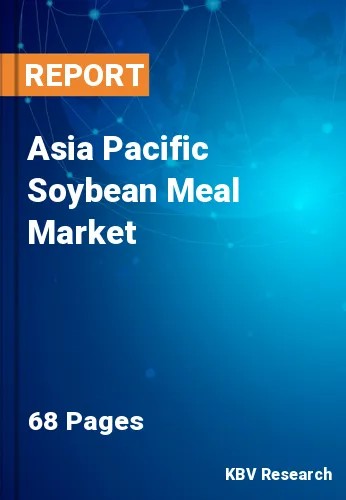The Asia Pacific Soybean Meal Market would witness market growth of 5.4% CAGR during the forecast period (2022-2028).
It is anticipated that an increase in disposable income will lead to an increase in expenditure on organic goods, which will, in turn, lead to an increase in the market for organic products, especially in emerging nations such as India and China. During the production, processing, and storage phases of organic soy protein, there is a minimal amount of chemical and artificial additives, as well as preservatives and materials that are not made from organic sources.
Because these goods are manufactured from raw materials that are farmed organically, the major market participants are marketing soy products with organic labels because of this fact. There are three primary methods for extracting oil from soybeans: The use of a solvent in order to extract oil from soybean flakes is by far the most frequent method used.
This is the most effective approach, and after following it, there will be around 1.5% oil remaining in the soybean meal. The second technique is a mechanical one, and it involves extracting the material using a screw press (expeller). This technique produces a smaller amount of oil along with a soybean meal that has a residual oil content that is more than 5%. The third technique utilizes a solvent for the oil extraction process while also combining the extruding and expelling of soybean flakes.
The most important countries in the area in terms of the production of soybean meal are India, China, Bangladesh, Thailand, and Pakistan. In January 2021, the costs of domestic soybean meal in India suddenly began to rise without any prior notice. In recent weeks, costs have skyrocketed to levels that have never been seen before. Prices for soybean meal in August 2021 are now averaging $1,115, India rupee (INR) 83,000 per metric tonne (MT), which is 110 percent more than the minimum support price (MSP) set by the government, which is $531/MT (INR 39,500). At the beginning of July, the price of soybean meal reached a new all-time high of $1,350 per metric tonne (INR 100,050), while it averaged $1,243 per metric tonne (INR 92,500) in the local markets.
The China market dominated the Asia Pacific Soybean Meal Market by Country in 2021, and would continue to be a dominant market till 2028; thereby, achieving a market value of $8,271.6 Million by 2028. The Japan market is estimated to grow a CAGR of 4.8% during (2022 - 2028). Additionally, The India market would experience a CAGR of 6.1% during (2022 - 2028).
Based on Distribution Channel, the market is segmented into Offline, Online, and B2B. Based on Nature, the market is segmented into Conventional, and Organic. Based on Application, the market is segmented into Animal Feed Industry, Food Industry, and Pharmaceutical. Based on countries, the market is segmented into China, Japan, India, South Korea, Singapore, Malaysia, and Rest of Asia Pacific.
Free Valuable Insights: The Worldwide Soybean Meal Market is Projected to reach USD 78.2 Billion by 2028, at a CAGR of 5.1%
The market research report covers the analysis of key stake holders of the market. Key companies profiled in the report include Bunge Limited, Louis Dreyfus Company B.V., Kemin Industries, Inc., The Scoular Company, Mamta Hygiene Products Pvt. Ltd, Mahesh Agro Food Industries, Nordic Soya Ltd., Denofa AS (Amaggi Agropecuária), DHN International, and Minnesota Soybean Processors.
By Distribution Channel
By Nature
By Application
By Country
Our team of dedicated experts can provide you with attractive expansion opportunities for your business.

